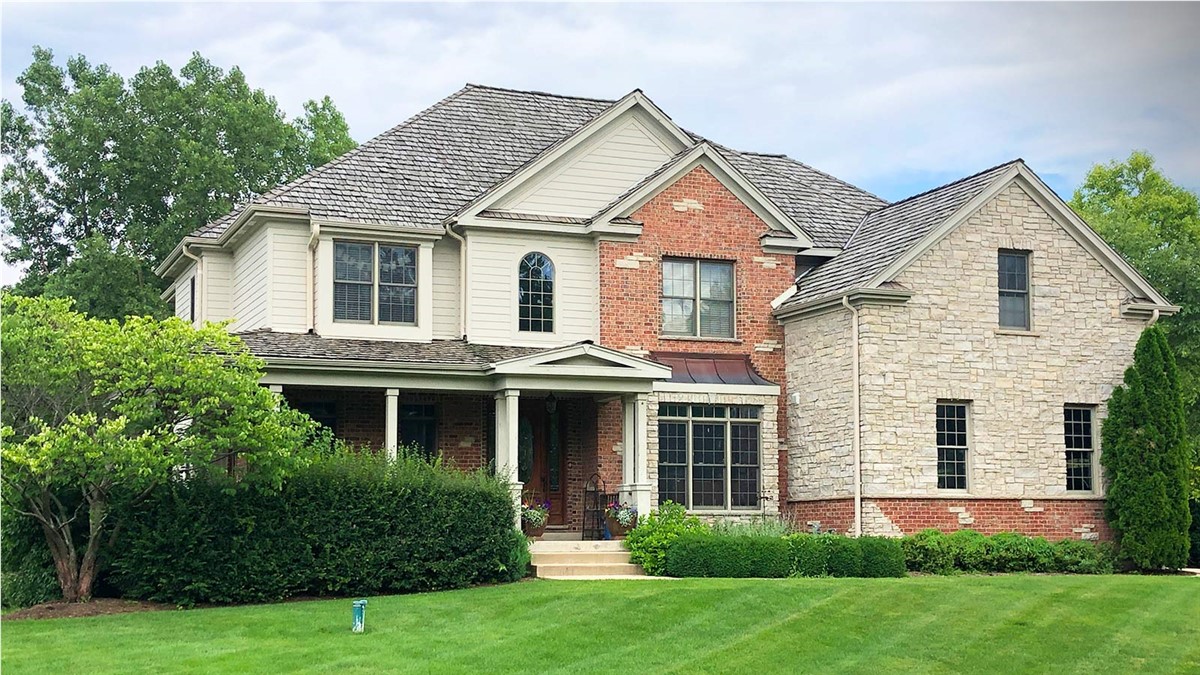When looking at your options for a protective and aesthetically pleasing exterior veneer or siding, you’ve probably seen or at least heard of stone veneer being mentioned and then wondered just what is stone veneer. Knowing what it is and how it compares to other options, even natural stone, can help you make the right decision about what to have installed in your home. Here’s what you need to know.
What is Stone Veneer or Faux Stone?
Also known as thin stone or faux stone, it is a thinner product that can be installed directly onto walls without foundations or steel flashings. While it can be found in natural options, it is oftentimes an engineered product that closely resembles the real stuff. Not only can it emulate the look of natural stone, but it can be created to have a striking and even modern appearance as well.
Natural stone veneer is made by slicing natural stone thinly. Artificial or man-made stone veneer is a thin layer of artificial stone that is made to be attached to another surface to protect or decorate it, usually by combining Portland cement and various additives. It is specifically designed to replicate the appearance and even the feel of natural stone and is available in a dizzying array of colors and shapes. This makes stone veneer an ideal option not only for exterior siding applications but for interior accents and protective applications as well. The only thing it cannot be used for, however, is for anything requiring structural support.
How Is Stone Veneer Created?
It is generally created from a mix of cement, lightweight & naturally occurring aggregates, and various pigments to create color gradients and a natural appearance. Initially, it was simply thinly sliced natural stone that was laid over another surface, and starting in the ‘50s it was improved to a more engineered substance.
In most cases, to achieve the best replication of natural stone, once the engineered substance has been mixed it is added to a mold. These molds are made directly from natural stone, in such a way that they capture all of the textural nuances of the original, and the coloration used means that no two examples will ever look the same, just like natural stone.
Is It Better Than Natural Stone?
Stone veneer is incredibly versatile from a design standpoint, it can be used in more applications and with greater ease, than natural stone. Additionally, it is far more affordable than natural stone, often costing 30%-60% less than natural stone for a particular project. This can make a huge difference in the budget needed to remodel or renovate a particular space or home where the stone veneer is chosen over natural.
When it comes to periodic maintenance, both stone veneer and natural stone stand on relatively equal footing. Both can be cleaned with comparative ease, simply being washed with a mild cleaning solution and a gentle brush. For homeowners that are considering stone veneer siding, this can mean much less maintenance over time, particularly when weighed against other types of siding like wood or vinyl.
If you’re planning on adding stone to an area that regularly sees moisture, like near a pool, hot tub, or even a bathroom, a stone veneer will be a far better choice than natural. Natural stone becomes slick and does not breathe well, whereas the complete opposite is true for stone veneer. It reduces the formation of organic films and breathes enough to facilitate quicker drying.
It Can Help Your Home Look Its Best
There are a lot of options to help protect and beautify your home’s exterior, and siding is just one of many. If you’re still wondering or would like more information on specifics for your project, contact your local professionals today for a free estimate.





